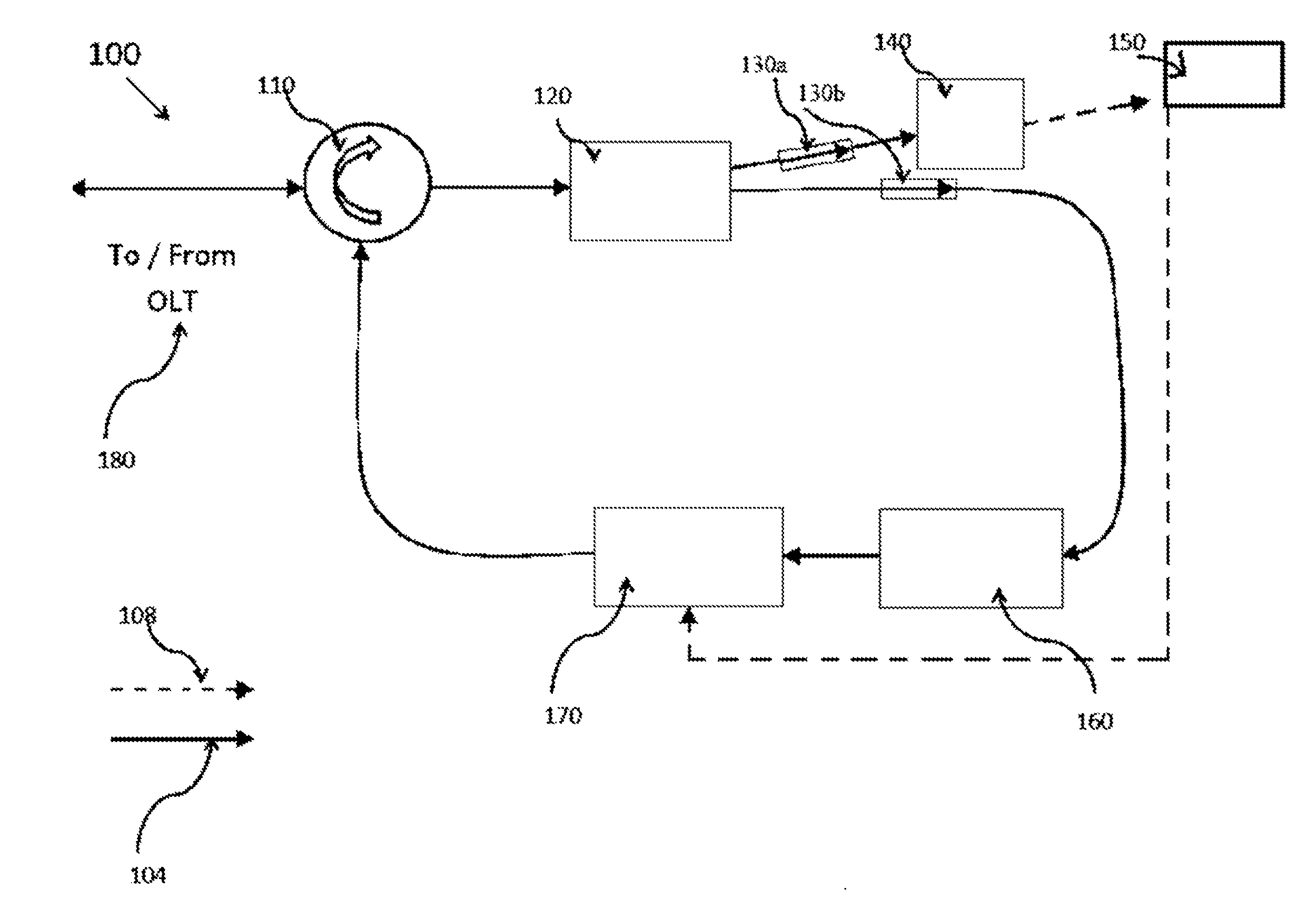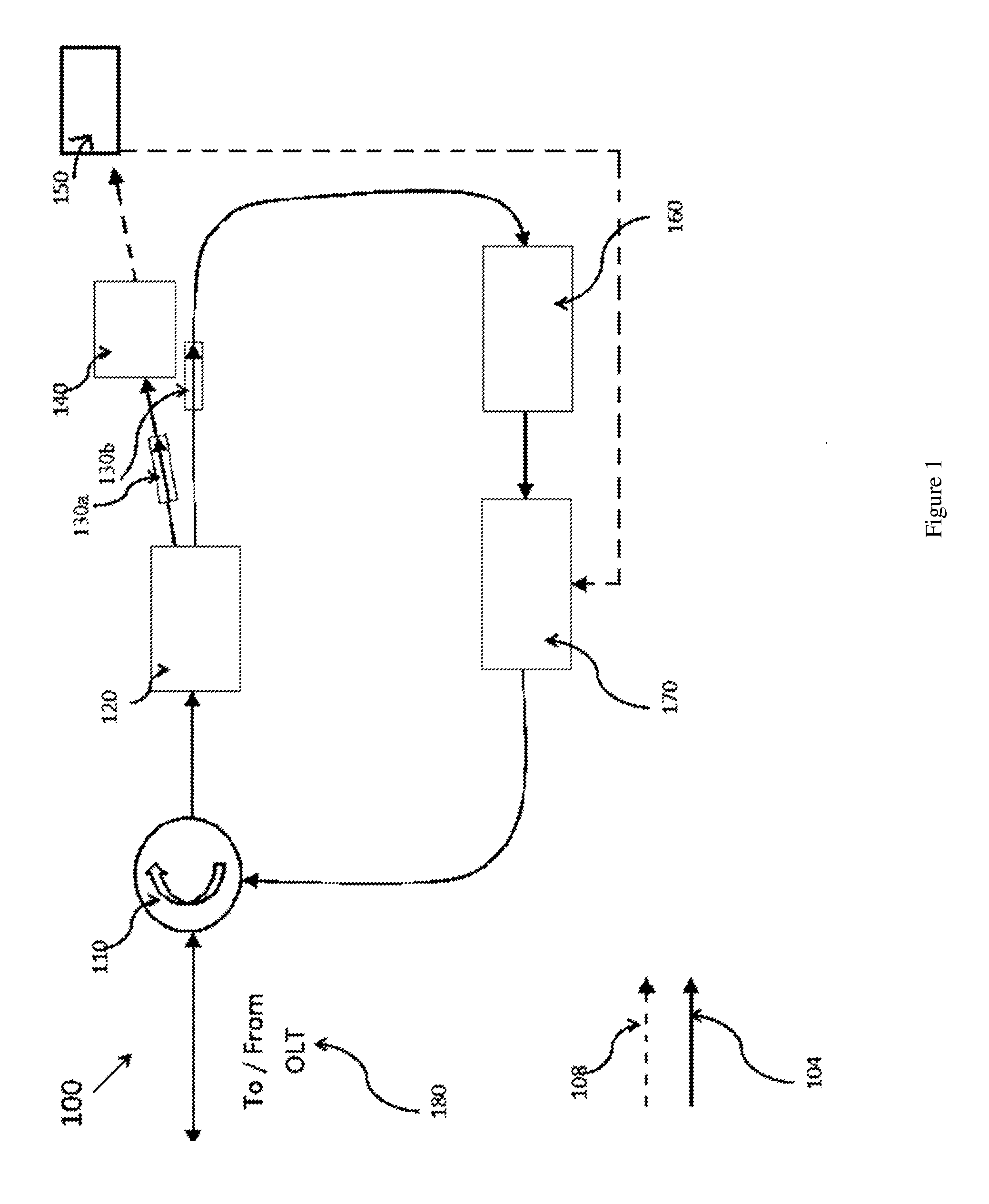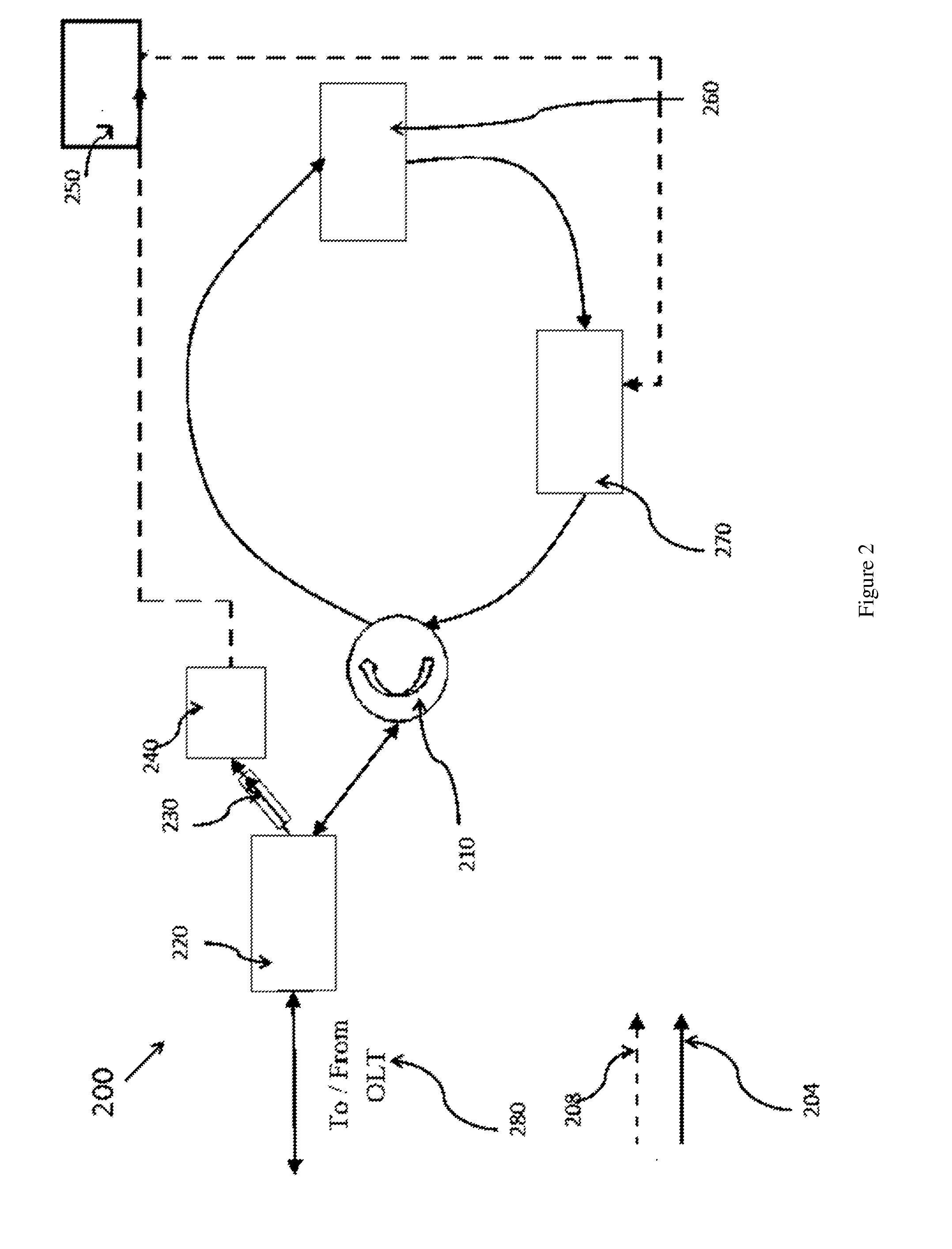Wavelength Division Multiplexing Passive Optical Network System
a passive optical network and wavelength division technology, applied in wavelength division multiplex systems, electromagnetic transceivers, multi-component communication, etc., can solve the problems of ineffective cost-effective addition of fibers and additional fibers to address bandwidth issues, limited bandwidth over such networks, and limited services to customers, so as to reduce optical noise, reduce the use of fibers and components, and increase the upstream and downstream data bandwidth.
- Summary
- Abstract
- Description
- Claims
- Application Information
AI Technical Summary
Benefits of technology
Problems solved by technology
Method used
Image
Examples
Embodiment Construction
[0015]While the preferred embodiments of the invention have been illustrated and described, it will be clear that the invention is not limited to theses embodiments only. Numerous modifications, changes, variations, substitutions and equivalents will be apparent to those skilled in the art without parting from the spirit and scope of the invention.
[0016]It is to be understood that the present embodiments are described in terms of a passive optical network (PON); however, other optical networks can be contemplated for the present teachings. While FIG. 1 and FIG. 2 show illustrative optical hardware configurations, these configurations may be reconfigured or combined to provide functionality within the scope of the present principles.
[0017]The present invention in the form of one or more exemplary embodiments will now be described. Persons of ordinary skill in the art will realize that the following description of the present invention is illustrative only and not in any way limiting....
PUM
 Login to View More
Login to View More Abstract
Description
Claims
Application Information
 Login to View More
Login to View More - R&D
- Intellectual Property
- Life Sciences
- Materials
- Tech Scout
- Unparalleled Data Quality
- Higher Quality Content
- 60% Fewer Hallucinations
Browse by: Latest US Patents, China's latest patents, Technical Efficacy Thesaurus, Application Domain, Technology Topic, Popular Technical Reports.
© 2025 PatSnap. All rights reserved.Legal|Privacy policy|Modern Slavery Act Transparency Statement|Sitemap|About US| Contact US: help@patsnap.com



